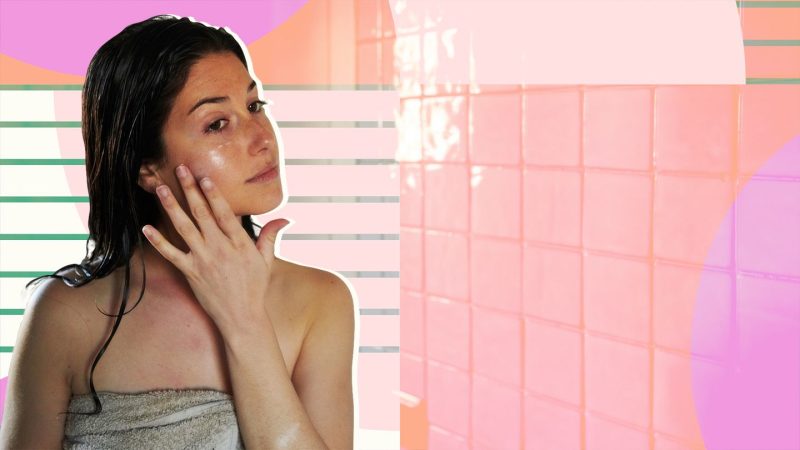
Vaginal pimples are more common than you think and have multiple causes. These bumps can sometimes be painful or uncomfortable but rarely severe.
It is not always possible to determine the cause of pimples in the vagina or the areas surrounding the female genital area. However, the most common reasons are contact dermatitis, folliculitis, and inflammation of the Bartolino and Skene glands (in charge of lubricating the vaginal canal).
In the event of symptoms such as pain, itching, increased volume of the pimple, or that do not subside spontaneously in 2 weeks, a gynecologist should be seen to determine medical treatment.
Contents
Causes of pimples in the vagina
The causes of pimples in the vagina are varied from allergic or secondary reactions to shaving to sexually transmitted infections. Let’s see some examples.
contact dermatitis
Contact dermatitis causes bumps or pimples on the vagina and vulva from an allergic reaction to something in contact with the skin. Common irritants include douching, fragranced soaps or lotions, sanitary napkins, spermicides, condoms, lubricants, laundry detergent, or bubble baths.
But you also have to consider sweat, semen, and urine. In addition to bumps or pimples in the vagina, they are accompanied by burning, itching, and erythema.
folliculitis
Folliculitis is caused by inflammation and infection of the hair follicle. These pimples in the vagina can result from shaving or waxing, ingrown hairs, sweat, and wearing very tight underwear.
In this case, as hair grows in the hair follicle, it curls up towards the skin or extends inward (ingrown hair). A bump with a yellowish-white center is generated by the accumulation of pus with redness around it.
It generates pain, itching, and a feeling of discomfort. It is common to see them on the labia majora of the vagina or in the groin.
Its treatment consists of placing warm compresses to reduce inflammation and antibiotic creams. You should go to the gynecologist if it does not improve in a few days. It can increase in volume and generate an abscess in the area.
Even without an associated infection, ingrown hairs lead to a bump or pimple in the vagina that is red and painful. The inflammation usually subsides with local heat and the passing of days.
Swollen glands of the vulva
Bartholin’s glands and Skene’s glands are responsible for keeping the vaginal canal and vulva lubricated and with fewer bacteria. Due to bacteria or poor personal hygiene, the excretory duct may be obstructing, generating a bulge.
Usually, this pimple is painless and is felt by the woman while bathing or during intimate contact. It disappears spontaneously in a few days.
If it increases in size, there is pain or the presence of pus; you should see a specialist doctor. When they are large, they may require manual drainage with a scalpel.
genital fungus
When multiple pimples appear in the vagina and on the labia majora or minora, accompanied by itching, burning, and skin reddening, a fungal infection should be suspected.
Candida albicans is the one that most frequently causes this type of infection. It is associated with aggressive and irritating intimate hygiene products, obesity, diabetes, hormonal changes, antibiotic use, and pregnancy.
In addition, it can manifest with changes in vaginal discharge (white discharge, like sour milk), discomfort when urinating, and sexual activity. Treatment is with topical antifungals.
Varicose veins in the vulva
Varicose veins here are rare and are associated with causes of increased intra-abdominal pressure, such as aging, pregnancy, and childbirth. They are bluish-colored nodules that do not usually hurt but are associated with tingling and itching.
Genital herpes
Genital herpes is a sexually transmitted infection and generates lesions that can be classified as pimples in the vagina. Small clear fluid-filled blisters that feel like bumps, itching, and pain occur in the genital region.
It is essential to know that these lesions disappear and appear again when there is a weakened immune system. They always require evaluation by a specialist doctor. When the symptoms are very intense, antivirals should be prescribed.
Genital warts
Caused by the human papillomavirus, warts are transmitted by unprotected intimate contact. In addition to generating small pimples in the vagina, they can merge, producing a cauliflower-like lesion.
Intimate contact should be avoided when the lesions are active since they are contagious. They can be addressed with cryotherapy, laser, electrocautery, microsurgery, or application of acid to remove the lesions.
Molluscum contagiosum
This viral infection can cause pimples anywhere on the body. It manifests as growths that are called mollusks. They are small, raised, flesh-colored, or white, with a pearly appearance and a dimple in their center.
They subside spontaneously, although they can be treated topically or orally. Its suspicion requires evaluation by a gynecologist or dermatologist. They take 6 to 12 months to disappear.